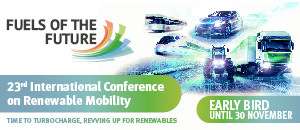Reconciling the REDII and climate ambition in EU Member States
The EU is committed to carbon neutrality by the middle of the century, but long-term objectives require ambitious action today. The clean energy and climate package, including a set of legislations to ensure the EU is on track to reduce greenhouse gas (GHG) emissions by at least 40% by 2030, have now all been adopted. An important legislation is the Effort Sharing Regulation (ESR), which obliges each Member State to reduce GHG emissions in sectors that are not covered by the EU ETS, i.e. transport, buildings, waste and agriculture. The largest emitter of all is the transport sector and it remains the most difficult nut to crack from a climate perspective. Indeed, GHG emissions in transport are still increasing in most Member States. In fact, GHG emissions across the EU rose slightly in 2017, mostly because of the increase of oil consumption from road transport.1
A fair question to ask is whether all the new legislations adopted will be sufficient to address the transport challenge. Carbon dioxide (CO2) emissions from cars need to be reduced by 15% in 2025 and 37.5% in 2030 vs 2021 baseline. CO2 emissions from heavy-duty vehicles (e.g.,...












